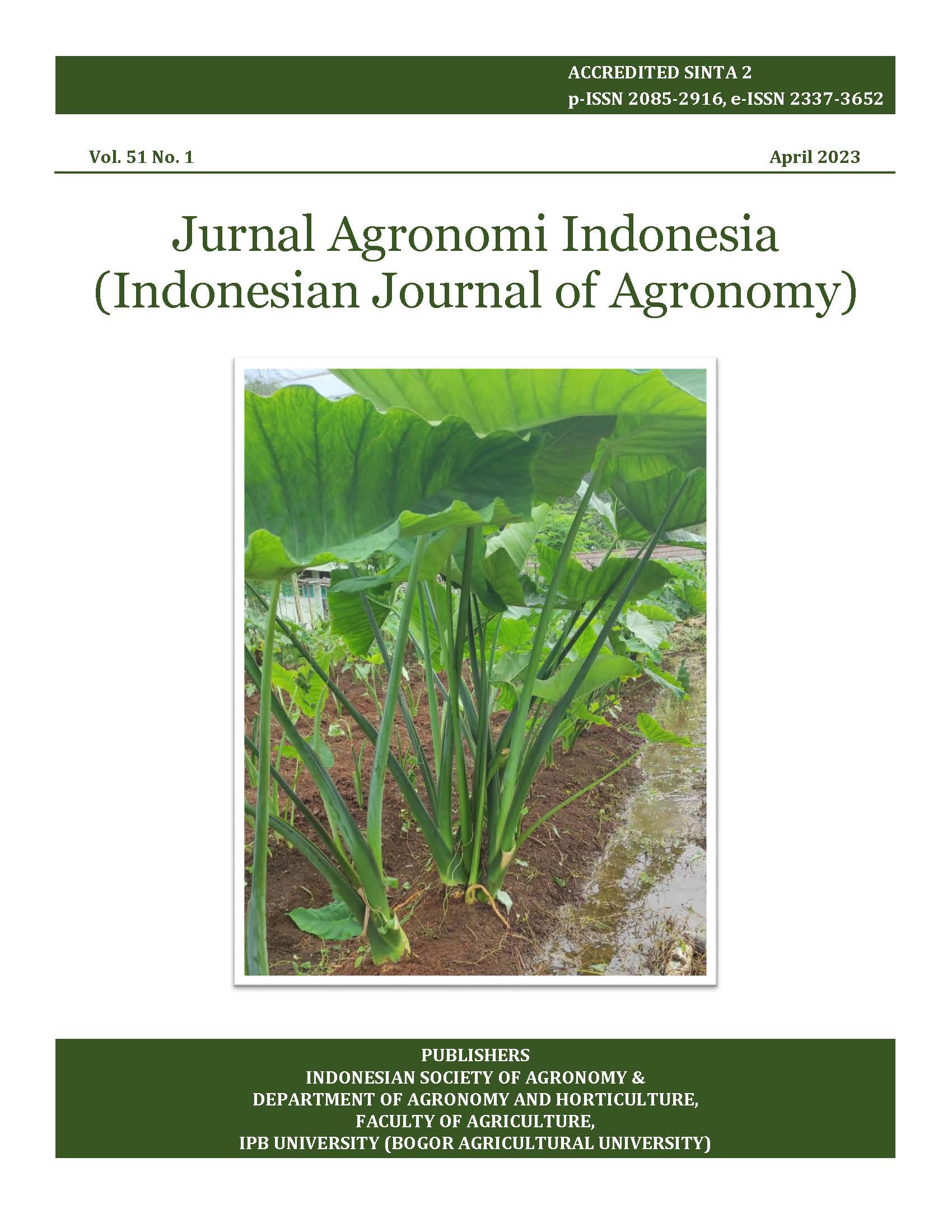Growth and production of soybean on different inoculant sources of arbuscular mycorrhizal fungi and water saturation periods
Abstract
Production expansion to suboptimal areas such as tidal land through the application of integrated land management technology is an effort to increase soybean production in Indonesia. The study aimed to evaluate the morphophysiological response of soybean treated with arbuscular mycorrhizal fungi (AMF) inoculation and duration of water saturation in tidal land. The study was conducted in April-October 2021 in the plastic house of the Research Field of the Faculty of Agriculture, Sriwijaya University, Palembang. The experiment used a randomized complete block design with two factors and 3 replications. The first factor was the source of AMF propagations (without inoculations, corn inoculants, soybean inoculants, sugarcane inoculants, and soybean-sugarcane inoculants). The second factor was the water saturation periods (0, 2, and 4 months since planting), so there are 15 treatments. The results showed that the interaction between the inoculant sources and the duration of water saturation had no significant effect on all parameters. The inoculant propagated in the media of sugarcane produced the highest effect as compared to other treatments. The water saturation for 2 or 4 months since planting gave soybean plants a better morphophysiological response than conventional cultivation.
Keywords: AMF inoculants; morphophysiology; saturated soil culture; soybean













